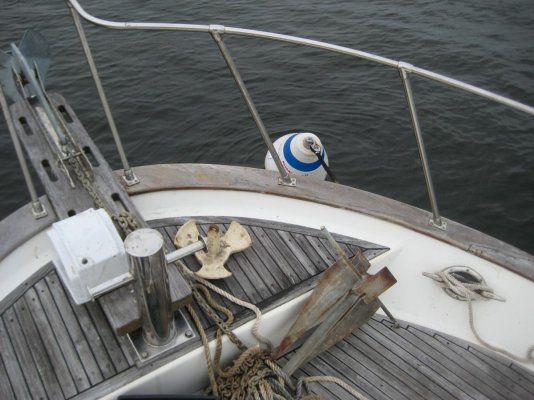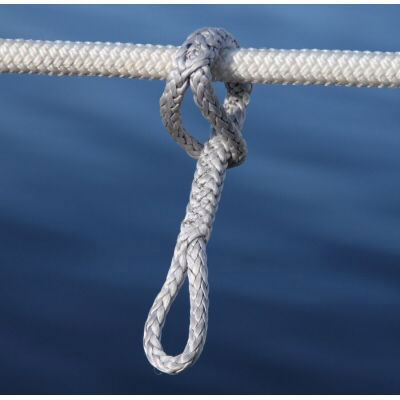DHeckrotte
Guru
Our sailboat had an anchor roller, chocks on the toerail, and a winch. It was the work of a moment to flip the rode off the roller, drop it into the chock and cleat it off.
Revel has a roller, a substantial bitt, a winch, a pair of hawse holes with those weird cleat-lets. There's no flipping the rode off the roller and easily dropping it through the hawse and cleating it off.
Our roller clearly is not up to the task of resisting lateral loads; it's bent, the roller itself is too short for the distance between the jaws of the bracket, the pin/axle is rusty and thus suspect.
What's the trick? In no air, I suppose I could cleat the rode off to the bitt, then fiddle around with a bight of rode and pass it into one hawse, cleat it off and cast off the bitt.
We're on an Annapolis Harbor mooring, hanging to one hawse and cleat.
Revel has a roller, a substantial bitt, a winch, a pair of hawse holes with those weird cleat-lets. There's no flipping the rode off the roller and easily dropping it through the hawse and cleating it off.
Our roller clearly is not up to the task of resisting lateral loads; it's bent, the roller itself is too short for the distance between the jaws of the bracket, the pin/axle is rusty and thus suspect.
What's the trick? In no air, I suppose I could cleat the rode off to the bitt, then fiddle around with a bight of rode and pass it into one hawse, cleat it off and cast off the bitt.
We're on an Annapolis Harbor mooring, hanging to one hawse and cleat.



